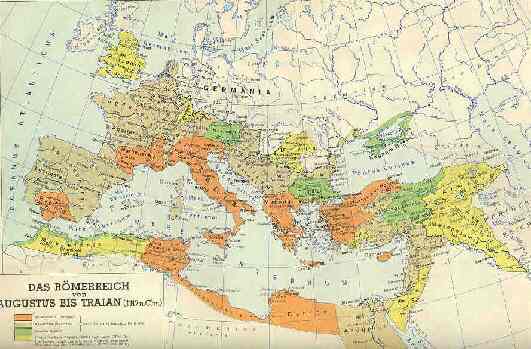 |
From Augustus to EU |
 |
From Augustus to EU |
| The Empire's frontiers were extended
further away in the Mediterranean sea and continental
Europe, reaching the Rhine and Danube thanks to Caesar
and Pompei military campaigns.. At the end of civil wars, Augustus was obliged to organise the political and economic systems in such a large territory. He used his own resources to feed Rome and the administrative and military system. Augustus gained popular support by food distributions, mainly grain and olive-oil. He created the annona prefecture in order to control the distribution of foodstuff to the people of Rome and to the army in the frontiers. |
|
| Literary sources identified a good Emperor with a leader capable of feeding the city of Rome. Thanks to this redistributive system the Baetican olive-oil, paid as tax in kind, also reached the Empire's frontiers, since it was part of army's supply. That is why Baetican amphoras are so common in Britain and the Germanic-Danubian frontier. |
|
Epigraphic data recorded in the Testaccio is very useful to date many findings of Baetican amphorae documented in Northern and Central Europe.

Map of Britannia that shows
density of imports of Dressel 20 from the Baetica.
The European Union shares with the Roman Empire an important part of its territories and many of the problems related to trade and production. It happens to be quite interesting to see how all these problems were sort out by the political entity such as the Roman Empire, whose frontiers were wider than the ones of the EU.

Roman empire provinces.
Project Testaccio is one of the most important programs in ancient history and archaeology of the Roman Empire. It is directed by two scientific groups from Italy and Spain.